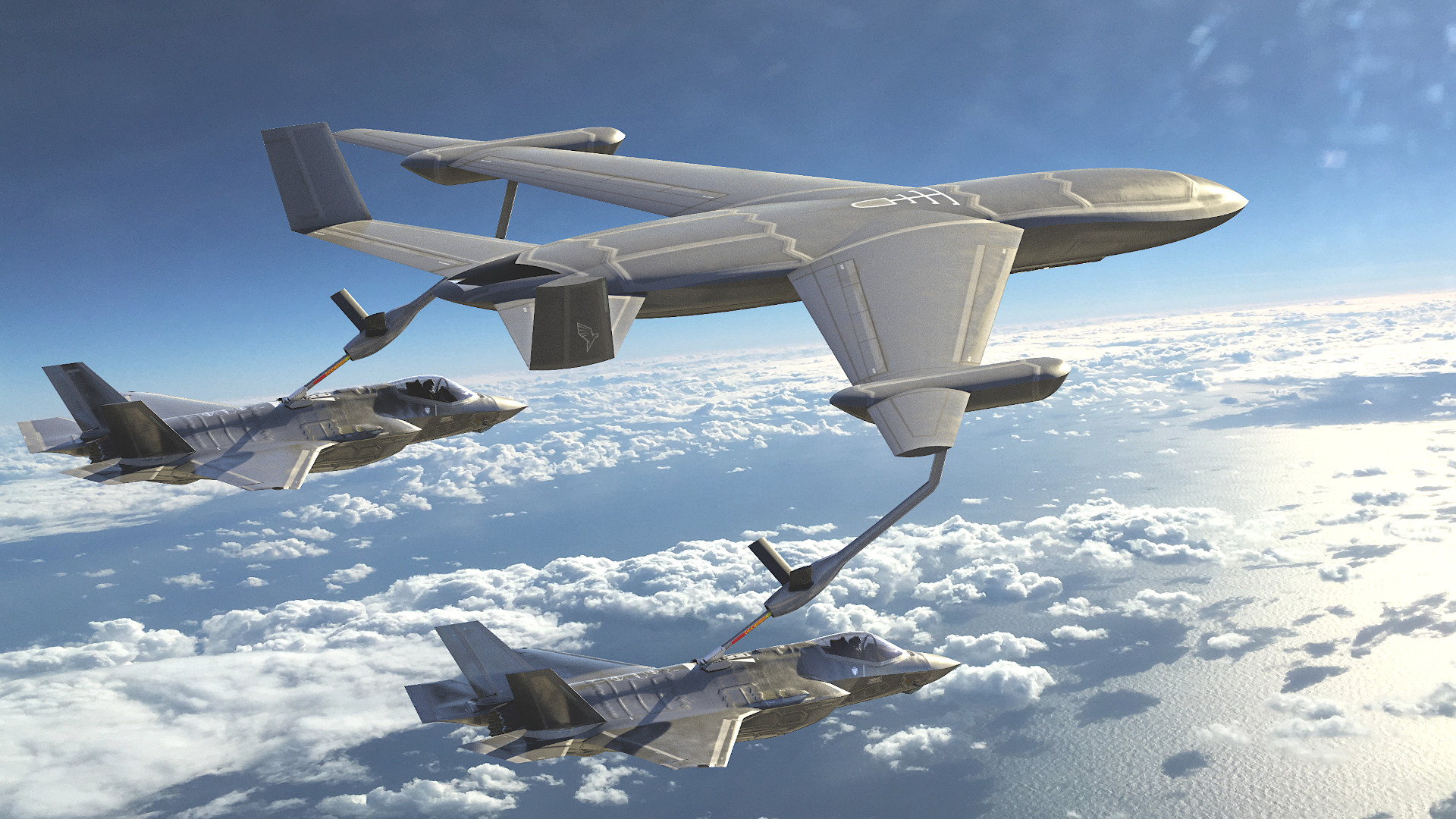Lockheed Martin’s Skunk Works advanced projects division has put forward a new notional vision for a stealthy pilot-optional aerial refueling tanker. This comes as the U.S. Air Force is refining requirements for a future Next Generation Air-Refueling System (NGAS) ‘system of systems’ and amid serious concerns about how the service expects to pay for that and other modernization priorities.
Skunk Works provided a rendering of its latest tanker concept refueling a pair of F-35A Joint Strike Fighters, seen at the top of this story and below, to The War Zone. A different view of this same conceptual design was first shown publicly at the Airlift/Tanker Association’s (ATA) recently concluded annual symposium, as reported by Aviation Week.
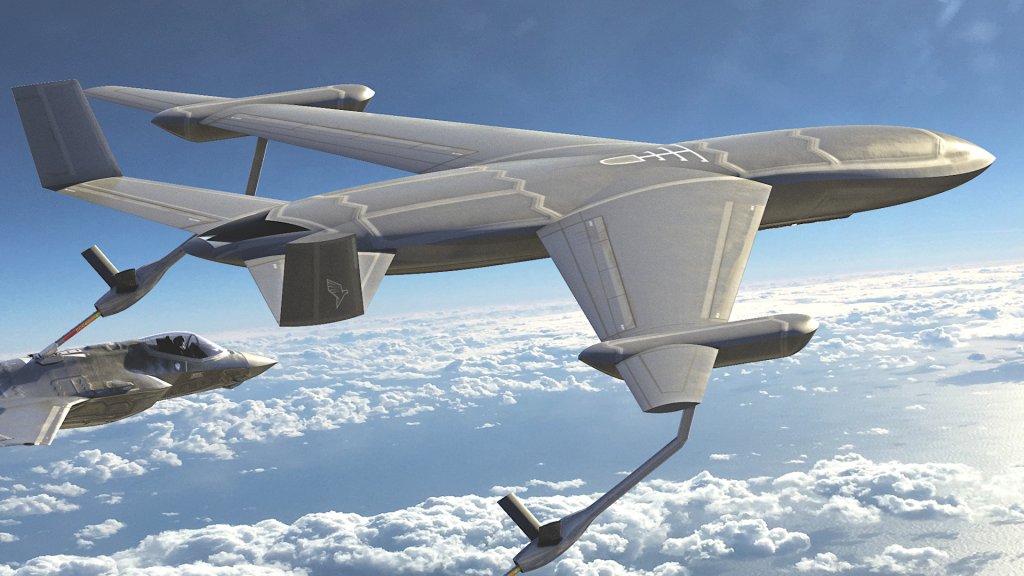
The rendering shows an aircraft with swept main wings and horizontal stabilizers with canted outboard vertical stabilizers. The tanker also has stealthy (low-observable) features, including a chine line that wraps around the forward fuselage and continues on either side behind the wing roots and saw-tooth panel lines at various points. Low observable shaping on its wingtip pods is also evident. Where the aircraft’s engine intakes might be situated is not entirely clear, but there is a single large shrouded ‘platypus-like’ exhaust with serrated edges at the upper rear of the fuselage.
The tanker is shown with a pair of refueling booms extending from pod-like sponsons toward the end of each main wing. The boom refueling method is the U.S. Air Force’s preferred means of getting gas into other aircraft in flight. It is possible that the booms on Skunk Works’ new design concept could also be configured to provide fuel via the probe-and-drogue method, which the U.S. Navy and Marine Corps prefer. Probe-and-drogue is also used to refuel Air Force CV-22 tiltrotors, as well as helicopters across the U.S. military. This system is often installed internally on the centerline rear of large tankers, such as the Air Force’s KC-46 and now-retired KC-10, as well as the Airbus A330 Multi-Role Tanker Transport (MRTT).
Whether or not the booms might be expected to collapse and/or retract when not in use is unclear. Though such a system could offer aerodynamic and radar signature-reducing benefits, it could also limit the strength of the boom. That, in turn, could present potential operational limitations and safety concerns. The booms on traditional tankers have been known to break under the wrong circumstances as happened just earlier this year in a mishap involving an Air Force KC-46 and an F-15E Strike Eagle combat jet, which you can read more about here. The KC-46, specifically, has been beset by various technical and other issues over the years, including a still unsolved “stiff boom” problem that prevents it from being used operationally to refuel A-10 Warthog ground attack aircraft at all.

Aviation Week had reported that Skunk Works’ notional design is pilot optional, with no clear provision for a crewed cockpit seen in the renderings available. It is possible that a cockpit could be fitted, as required, in place of a faired-over section on top of the forward fuselage. Another variation of the rendering might also exist showing a cockpit.
A pilot-optional design versus a completely uncrewed version does offer certain benefits. The War Zone previously explored this in detail after the emergence of the stealthy Model 437 Vanguard technology demonstrator jet from Northrop Grumman subsidiary scaled composites earlier this year, writing:
“Unmanned aircraft are still quite restricted as to where and how they can operate. A pilot totally changes this massive bottleneck and means the aircraft can be flown wherever it needs to go, to participate in any developmental flights or training exercises, no matter how complex. It can do this unburdened by typical drone airspace restrictions and the need for chase aircraft that can be required in certain situations. Just ferrying to a different location while manned, so it can access airspace where it can fly as if it were an unmanned aircraft, is a giant advantage.”
“For many tests, having a human onboard can accelerate the speed at which they can be accomplished. At its most basic, initial primary flight testing of the airframe will go far faster with a pilot at the controls. Overall, more risks can be taken when executing autonomous activities with a pilot there to take over and act as a safety backstop if needed.”
Skunk Works has publicly shown a number of other notional advanced crewed tankers in the past, including a boom-equipped one with an almost fighter-esque appearance just earlier this year, the features of which we previously explored in detail. Lockheed Martin has presented variations on a blended-wing-body design concept configured for boom and probe-and-drogue refueling, as well.
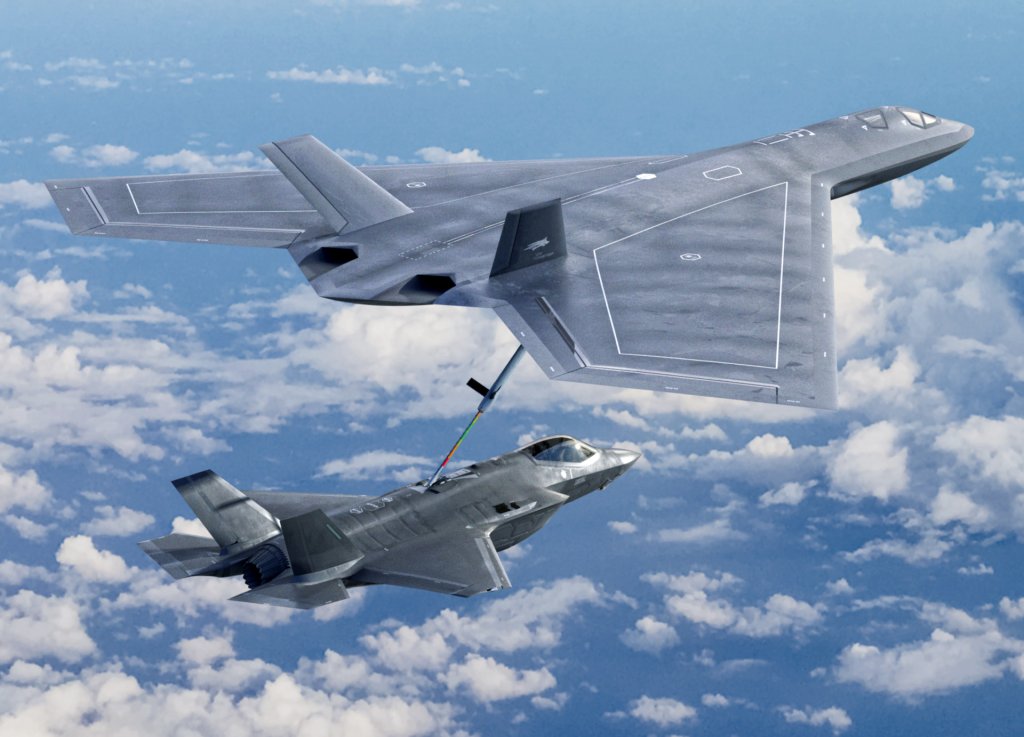
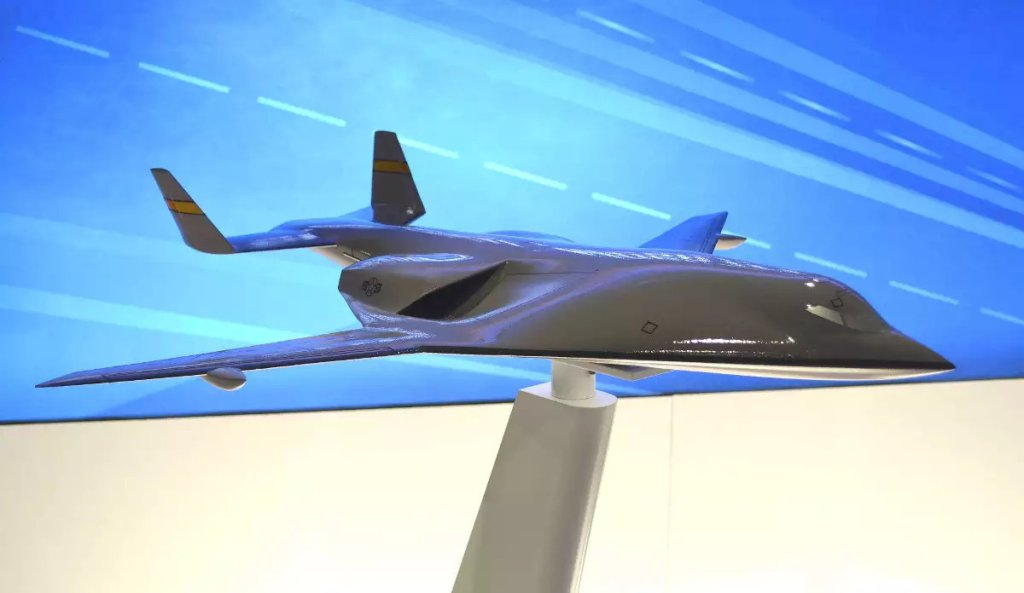
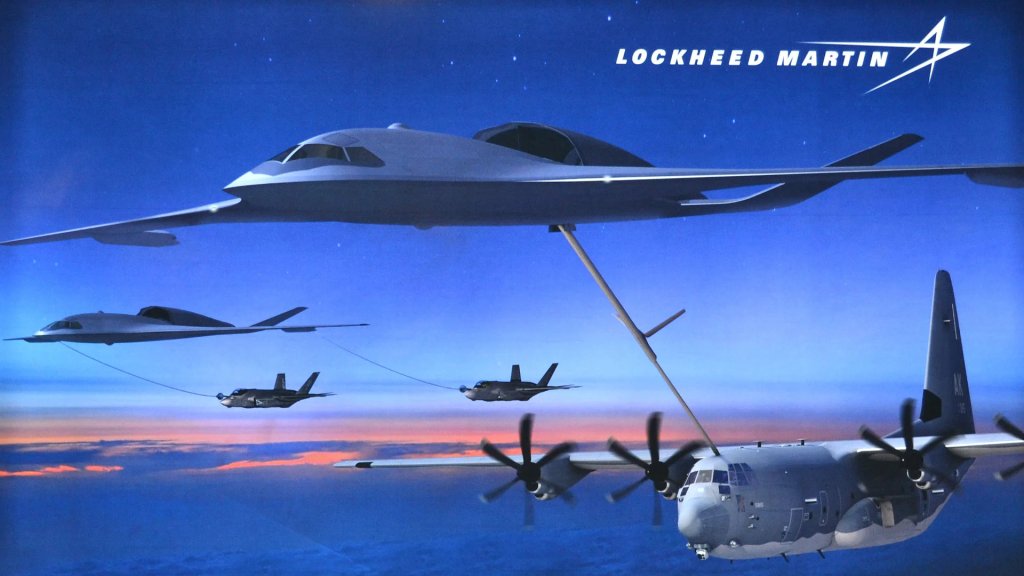
“Our team continues to explore a variety of configurations that deliver mission effectiveness through a connected, affordable, survivable and autonomous next generation tanker capability,” a Skunk Works spokesperson told The War Zone when asked for more details about the newest notional design. “We look forward to providing the U.S. Air Force with the range and endurance needed to fulfill the future of NGAS as it continues to define requirements.”
As already noted, the Air Force currently describes NGAS as a proposed family of systems, which could include a crew or uncrewed stealthy tanker, or a pilot-optional design, or some combination thereof. Boeing has also been pitching a land-based derivative of the MQ-25 Stingray tanker drone that it is developing for the U.S. Navy as a possible option for NGAS.

The complete NGAS ‘system of system’ is also expected to include existing non-stealthy tankers like the KC-46 and the KC-135 with various self-defense and other upgrades. The Air Force has also been actively exploring ‘buddy store’ podded aerial refueling systems that can work with aircraft configured to use the boom, which would also allow other aircraft, including tactical jets, to contribute to this refueling ecosystem.
Uncrewed tankers could be paired with crewed ones in a hub-and-spoke arrangement, with the drones helping ferry fuel to areas closer to the tactical edge while reducing risks to human aircrews. It is worth noting here that Skunk Works’ new rendering shows a notional design that can be refueled in flight itself.
Other tactics, techniques, and procedures could also help reduce the vulnerability of key aerial refueling assets, including linking up with receivers at lower altitudes below an enemy’s radar horizon. This is something the Air Force’s special operations community already has experienced doing, including with a pocket fleet of specialized KC-135RT “receiver-tankers” that can refuel and be refueled in mid-air, which you can read more about here.
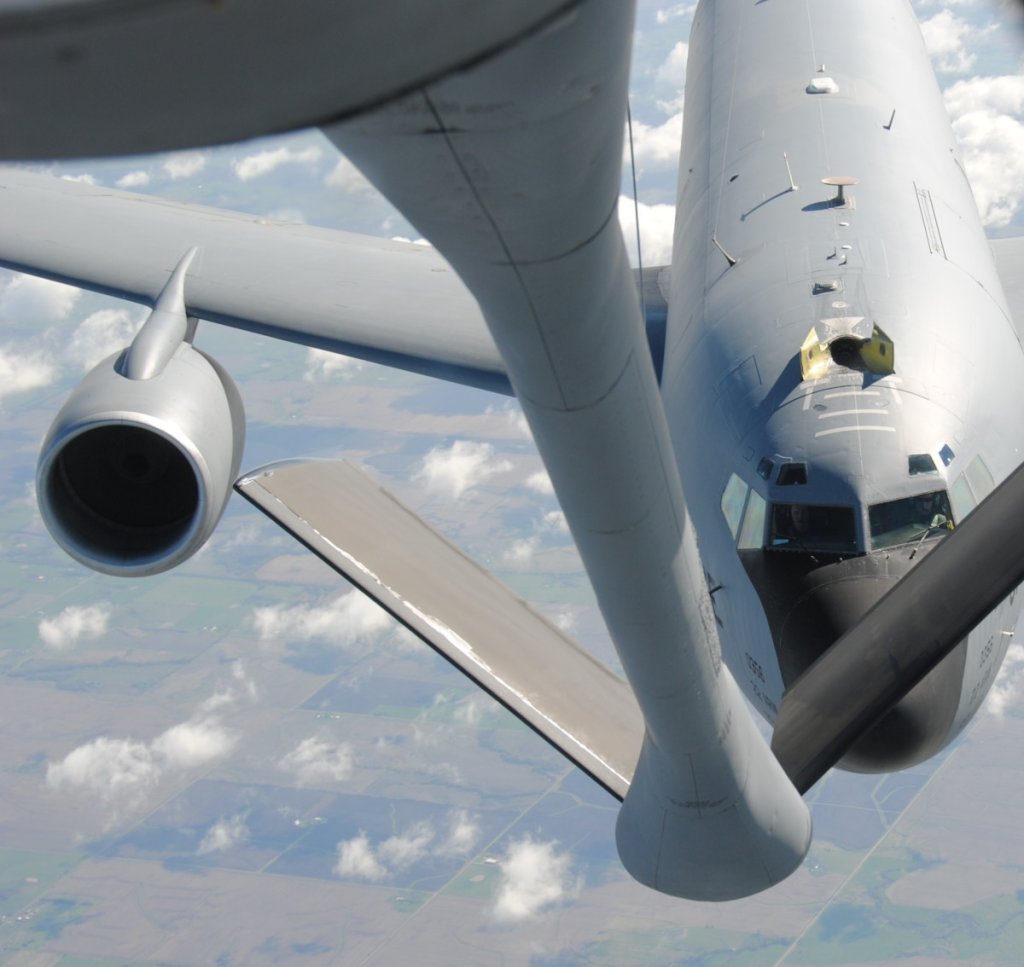
The War Zone has been highlighting the increasingly critical need for stealthy or otherwise more survivable tankers for years now. Expanding and evolving air defense threats, especially in the context of potential high-fight with China have only underscored this reality and are key drivers behind the Air Force’s current NGAS planning.
“Essentially the threat, China again, has reached out with new counter-air systems that could threaten our aircraft, especially tankers, at longer ranges, beyond the ranges which we normally would refuel fighter planes,” Secretary of the Air Force Frank Kendall said in a keynote address at the same ATA symposium where Skunk Works first rolled out its new tanker rendering. “This put our whole tanker acquisition strategy in question. It is still in question, but we are working to resolve the uncertainty as quickly as possible.”
Critical factors in this ongoing debate are range considerations, which are particularly pronounced in the Pacific region, together with the typically short combat radii of America’s current tactical combat jet fleets. This, in turn, puts existing tankers dangerously close to, if not inside anti-access/area denial bubbles near-peer competitors like China have already established and continue to expand.
Stealthy tankers that are not meant to penetrate deep into high-threat airspace, but to persist and operate on the edges of those zones, allowing existing tactical airpower and newer platforms to make it to their targets, could be part of changing that equation. Air Force plans for a new sixth-generation crewed stealth combat jet and Collaborative Combat Aircraft (CCA) drones as part of the Next Generation Air Dominance (NGAD) initiative have been set to have significant impacts in all this, with discussions about their expected ranges (and other capabilities) also tied in with how NGAS evolves. Procurement of a stealth tanker could help trade range and thus the complexity and cost of these new tactical platforms, while also keeping existing ones more relevant. The NGAD combat jet program is currently undergoing a deep review and the outcome of that reassessment will also have direct ramifications for the NGAS and CCA efforts.
In addition, “unfortunately, any new [tanker] design cannot be fielded for several years at best, even if affordable,” Kendall warned while speaking at the ATA gathering, highlighting potential lower cost-near term alternatives, such as upgrading existing tankers.
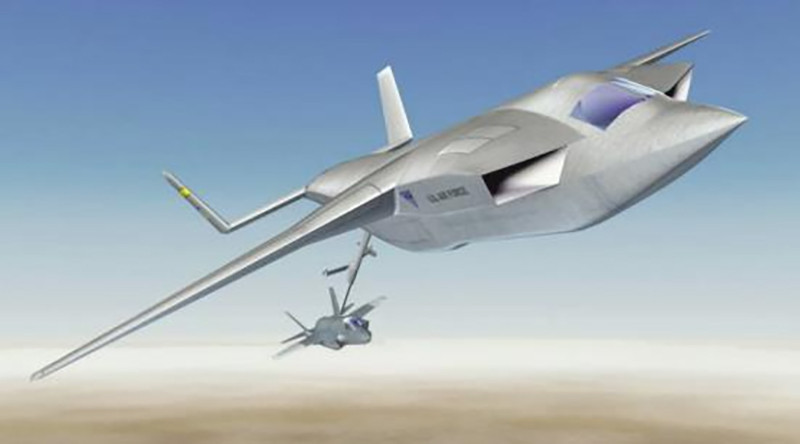
The Air Force’s top civilian also added new and even more dire remarks to a growing chorus of concerns about the affordability of a host of next-generation modernization efforts beyond NGAS that the service has previously described as essential for fighting and winning future high-end conflicts.
“The variable that concerns me most as we go through this analysis and produce a range of alternatives is going to be [the availability of adequate resources.] … to pursue any combination of those new designs,” Kendall said, referring to the NGAD combat jet and CCA drones, as well as NGAS.
You can read more about this brewing budgetary crisis here.
The Air Force is hoping to have firmer understanding of its NGAS requirements before the year is out. At that point, it may be clearer whether or not something like Skunk Works’ newest design concept is what the service is looking for to meet its future aerial refueling needs, if it can afford them.
Contact the author: joe@twz.com
